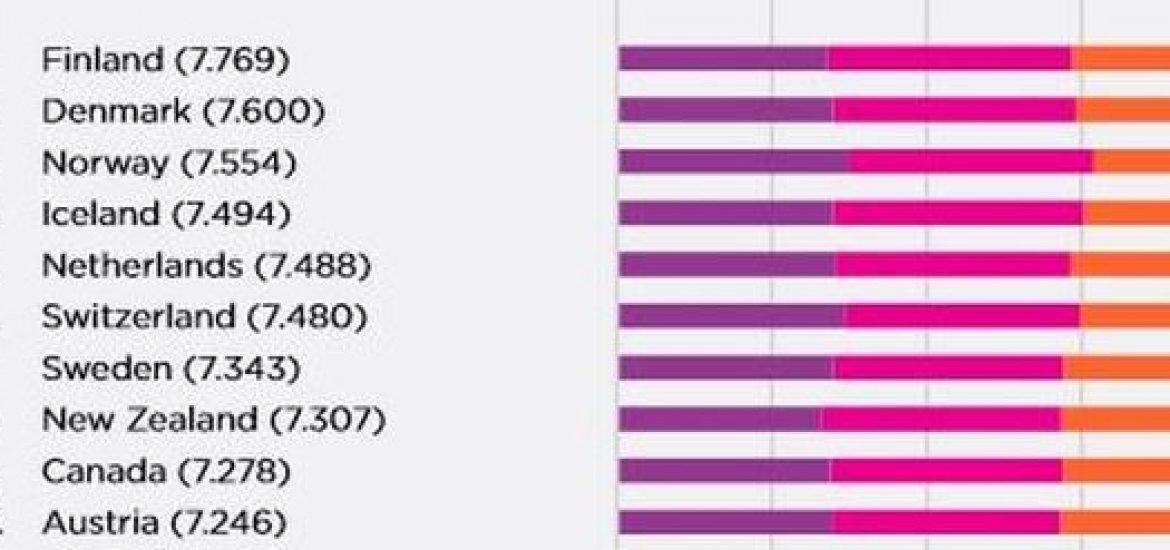When the year comes to a close, the Sustainable Development Solutions Network sector of the United Nations publishes a report on the world’s happiest countries titled, The World Happiness Report. They base rankings on GDP per capita, government-based support, life expectancy, personal freedoms, and government corruption. This year, the UN declared Finland the happiest country of 2019, which keeps the country on top for the second year in a row. The top ten still feature the famed four, Finland, Denmark, Norway, and Sweden, all located in the dark and dreary north. These countries have completely dominated the top of The World Happiness Report, and in the last 5 years, none of them have appeared outside of the top 10. With these countries vastly outperforming their peers, the world is left asking: why?
One aspect of life that these citizens enjoy is their government’s plentiful resources that help them remain healthy and happy. For example, Denmark, a number one country in the past, has free hospital treatment. Neighbors Norway and Sweden also have co-pay systems that reduce health care costs enormously. This raises general happiness alongside another commodity that the United States lacks: paid maternity leave. All four of these countries rank in the top twenty for government-mandated paid leave in the world. This practice leads to decreased risk of depression in parents and reduced rates of infant hospitalization, both things that result in a lower overall happiness score.
The governments in these countries are able to offer such generous health care because of the way they are set up. These countries work within a system called the Nordic model, which encompasses social and economic policies and reforms. This includes having 30 percent of the jobs in the public sector, as well as a majority being unionized. This cradle-to-grave system of raising taxes to make medicine and education cheaper also seems unheard of in countries such as the United States. The socialist governments are all rated as some of the most transparent and least corrupt democracies, which is also one of the things measured when the United Nations created The World Happiness Report.
Another factor going into the creation of the list is GDP per capita, which is the gross domestic product of the country divided by the total population. A rising GDP is a sure sign of growth and economic prosperity, and it is usually combined with a decrease in the unemployment rate. Thanks to their stable and democratic governments, along with their vast resources like oil and lumber, all four of these countries rank among the top 15 for GDP in the world. Norway is beating even the United States, with all four beating other global superpowers like Germany, France, the United Kingdom, and Japan.
Although these countries definitely still have their problems, they demonstrate a way of life that has its upsides and is benefitting the rest of the world. Since their economies are facing pure prosperity, they’re donating foreign aid to help other countries. This year, Sweden spent a higher percentage of their GDP towards aid than any other world superpower, and the country is leading the fight against climate change. Hopefully, the rest of the world will follow in these countries’ tracks to help the needy and the Earth, and making the world an overall happier place.

